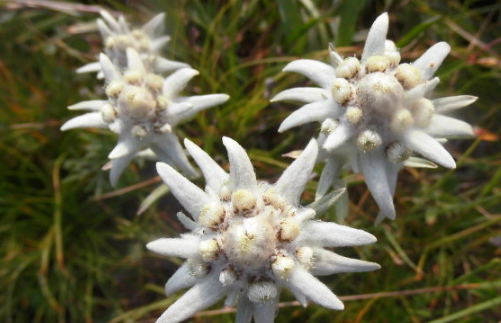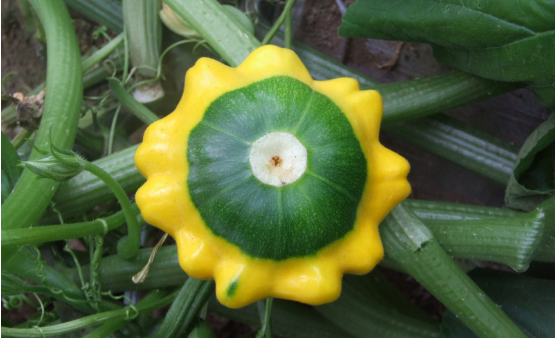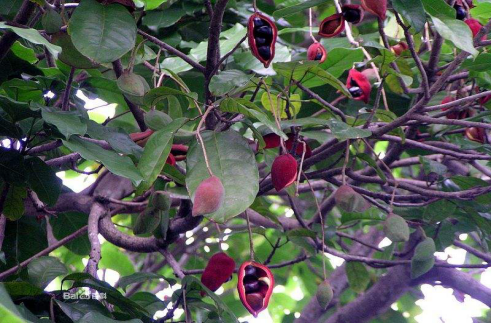Notes on Edelweiss Culture
pest control
Because the growth environment of snow velvet grass is in the cold area, so the environmental temperature there is very low, the probability of pests and diseases is also very low, but in order to grow healthily, it is still necessary to do some pest defense work. Generally every 10-15 days or so can be sprayed to the plant 2000 times dichlorvos or 1000 times dichlorvos to prevent pests. Every 7-10 days or so to plant spraying a 700-fold carbendazim or chlorothalonil sterilization.

Today is the introduction here, I hope this article is helpful to everyone, can make your Edelweiss grow more healthy and beautiful!
Edelweiss breeding methods and precautions
Cultivation method of Edelweiss
Edelweiss suitable for growth in loose and fertile humus soil, so the best choice for pot soil decayed leaves fertile soil. After sowing, do not let it go. After emergence, thin seedlings are needed. When the plants have 3 true leaves, they can be potted. Growth period basin soil not too wet, basin soil slightly wet can be. Fertilize once a month, pay attention not to get fertilizer on the leaves, in winter basin soil to try to keep a little dry.
breeding
There are two main propagation methods of Edelweiss, i.e. plant division and seeding propagation. Dividing plants, generally in spring for good, can be tufted after the Edelweiss directly potted. In addition, spring sowing is also the main sowing, seed germination temperature is 20 degrees Celsius, 10 days after sowing that germination.
Edelweiss farming precautions for changing pots
If you want to change the pot after a period of time, it is best to prepare the soil to be replaced in advance, and then cut off the dried or yellow leaves and stems of the plants to be transplanted from the roots, and then put them into the replaced soil.
pest
Edelweiss generally lives in a cold environment, so in the case of low temperature, the probability of occurrence of diseases and insect pests is not large, but it is still necessary to do a good job of pest defense.
Through the above introduction, I believe you have already understood the plant and its cultivation methods, so why not prepare to sow pure Edelweiss in spring?
1. The cultivation method of Edelweiss
Edelweiss suitable for growth in loose and fertile humus soil, so the best choice for pot soil decayed leaves fertile soil. After sowing, do not let it go. After emergence, thin seedlings are needed. When the plants have 3 true leaves, they can be potted. Growth period basin soil not too wet, basin soil slightly wet can be. Fertilize once a month, pay attention not to get fertilizer on the leaves, in winter basin soil to try to keep a little dry.
2. Light
Edelweiss is very fond of sunshine, in its growth period to ensure that the plant sufficient light, otherwise the plant is easy to occur excessive growth, but note that in summer, due to high temperature, strong light, so to give the plant appropriate shade, otherwise the plant may be burned, in winter, to ensure that the plant temperature at the same time, give the plant sufficient light.
3. Watering
Edelweiss requirements for water is still very strict, when it has just been cut, can not be directly watered on the soil, but to spray with spray bottles, generally 1-3 times a day, the higher the temperature, the more times the spray, cloudy days are reduced, when the plant grows normally, to ensure that the plant can get sufficient water, but do not have water in the pot, otherwise the root system of the plant may rot.
The above is about how to raise the problem of Edelweiss introduction, let's take a look at the Edelweiss need to pay attention to what!
- Prev

Cultivation of potted flying dish melons
The seedlings are raised in pots, which can be planted when the plant expands 1-2 leaves. The upper diameter of the large basin required by the planting basin should be 40-50 cm, containing nutritious soil. The formula of nutrient soil is: field soil, rotten livestock and poultry manure, sawed or rotten horse manure according to the proportion of 7:2:1. One UFO melon per pot
- Next

The reproduction of apple grandma
Sowing and reproduction this is one of the easiest methods of reproduction, but it takes some time to mature. First of all, when the apple woman is ripe, pay attention to the maintenance of the seeds. Before sowing, do not expose to the sun, keep moist, treat the soil first, then pick it, and finally sow the seeds into the soil.
Related
- Fuxing push coffee new agricultural production and marketing class: lack of small-scale processing plants
- Jujube rice field leisure farm deep ploughing Yilan for five years to create a space for organic food and play
- Nongyu Farm-A trial of organic papaya for brave women with advanced technology
- Four points for attention in the prevention and control of diseases and insect pests of edible fungi
- How to add nutrient solution to Edible Fungi
- Is there any good way to control edible fungus mites?
- Open Inoculation Technology of Edible Fungi
- Is there any clever way to use fertilizer for edible fungus in winter?
- What agents are used to kill the pathogens of edible fungi in the mushroom shed?
- Rapid drying of Edible Fungi

